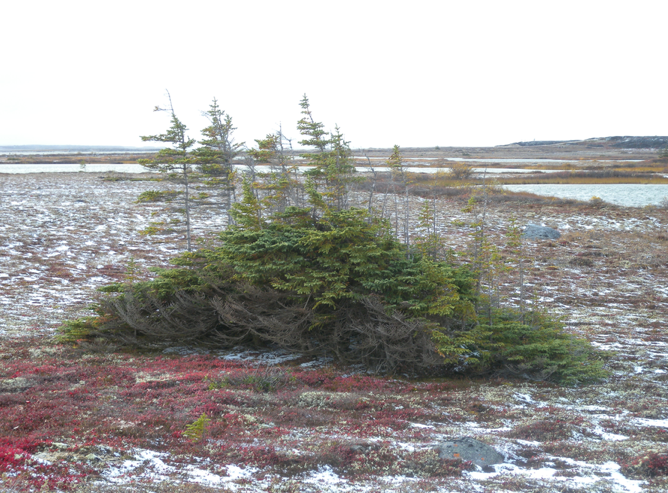Projects
Evaluating growing season length and productivity across the ABoVE Domain

Primary Investigator (NASA ABoVE, Terrestrial Ecology, 2015-2019)
NASA Proposal abstract:
Objectives:
1) Using novel combinations of MODIS bands (including new chlorophyll:carotenoid indices, CCIs), we will develop a new light-use efficiency (LUE) model.
2) The new LUE model terms and products (e.g. gross primary productivity, GPP) will be compared to ground validation sites where flux and optical data are available.
3) We will compare the new LUE model to other models, including the benchmark MOD17 GPP products and emerging GPP products from solar-induced fluorescence (SIF) methods (OCO2 satellite sensor).
4) Using these methods, we will evaluate the relationship between growing season length and productivity to investigate reported ‘browning and greening’ and their causes and implications for different ecosystems within the ABoVE domain.
Methods/Techniques: To accomplish these objectives, we will use satellite observations coupled with ground validation to investigate changing growing season length and its impact on the carbon budget of boreal and arctic regions. A primary approach will be to develop a new light-use efficiency (LUE) model of ecosystem productivity, based on a new combination of satellite indices provided by reprocessed MODIS prodects. In addition to standard MODIS products (e.g. NDVI) we will utilize newly available chlorophyll:carotenoid indices (CCIs, derived from novel combinations of MODIS terrestrial & ocean bands capable of ‘invisible’ photosynthetic phenology in evergreens). Our initial geographic focus will be on boreal regions where photosynthetic down regulation restricts photosynthetic activity, which has been difficult to assess with conventional means. By the end of the project period, modeling will span the full range of ecosystems across the ABoVE domain, and validation will involve both ground networks and independent satellite-based productivity estimates.
To validate satellite sensor and LUE model products with ground observations, we will utilize existing data from an extensive network of ground stations, consisting of flux tower and optical phenology stations spanning the ABoVE domain and covering a range of conditions and ecosystem types. Validation will consider both satellite optical indices and their modeled flux products, and will evaluate the effects of spatial scale, sampling angle, spectral scale, and temporal aggregation on the interpretation of optical signals. Ground validation will also clarify the confounding effects of clouds, snow, ice, and standing water on key vegetation optical indices, including NDVI and CCIs. Additional validation will compare satellite products (e.g. GPP) to the standard MODIS GPP product (MOD17) with independent estimates from OCO2 fluorescence products and atmospheric inversions as these become available.
Significance: This study addresses the ABoVE topics of reported greening and browning of northern ecosystems, as previously reported in the satellite NDVI record. These satellite NDVI observations have suggested potentially large changes in boreal and arctic carbon budgets, biogeochemistry, surface-atmosphere feedbacks, and disturbance regimes, but can also be subject to misinterpretation due to the over-determined nature of satellite indices. By utilizing the full range of information available from MODIS products, we will enhance our understanding of ecosystem processes beyond what is possible from exiting NDVI-based methods alone, and lay the foundation for future modeling efforts and satellite sensors having improved sensitivity to subtle vegetation change and its underlying functional significance. This improved assessment of ecosystem productivity and effective growing season length across the ABoVE domain will allow better understanding of the carbon balance and other ecosystem feedbacks to the atmosphere and climate for northern ecosystems. By linking to an extensive ground validation network, we will also enhance opportunities for outreach and community participation across the ABoVE domain.